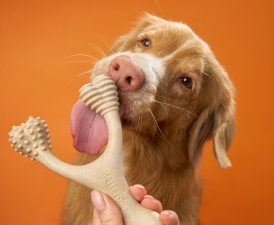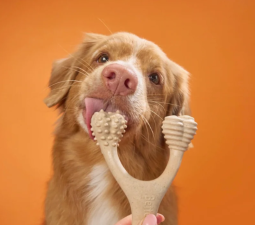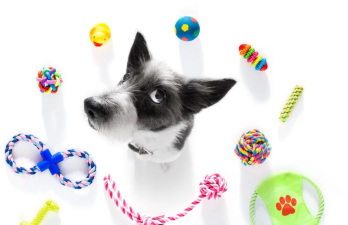Pets' natural need for chewing makes pet chew toys a necessity. The original intention of designing such toys is to help pets consume excess energy, relieve discomfort during teething, and protect furniture from damage. Toys made of different materials have obvious differences in durability and safety. Choosing the right style requires considering the pet's breed, age, and chewing habits.


Pets' natural need for chewing makes pet chew toys a necessity. The original intention of designing such toys is to help pets consume excess energy, relieve discomfort during teething, and protect furniture from damage. Toys made of different materials have obvious differences in durability and safety. Choosing the right style requires considering the pet's breed, age, and chewing habits.
Rubber toys are known for their good elasticity and strong bite resistance, and are suitable for dogs with medium and low intensity chewing. The surface texture design can effectively clean teeth, and some hollow structures can be filled with snacks to increase attraction. Food-grade silicone toys are more suitable for puppies and elderly dogs. They are soft and do not hurt gums, but you need to pay attention to choosing non-porous styles to avoid bacterial growth. Nylon toys are harder and suitable for large dogs with strong chewing needs, but long-term use may cause excessive wear of teeth.

Natural materials have received more attention in recent years, such as deer antlers and cow hooves. These toys do not contain chemical additives, and the smell they emit is naturally attractive to pets. However, you need to be wary of the risk of oral damage caused by sharp edges and corners. It is recommended to polish them before use. Knitted toys are mostly made of cotton rope or sisal fiber, which is suitable for cats who like to tear, but there is a risk of accidentally ingesting the thread ends. The owner must accompany them when playing.
The size of the toy should follow the principle of "better big than small". The length should be at least twice the length of the pet's mouth, and the diameter should be greater than the width of the throat. The corners should be rounded without burrs, and the joints should be tight and not loose. For sound-making toys, make sure that the built-in components cannot be disassembled to prevent pets from swallowing them by mistake. Check the status of the toy regularly, and replace it immediately if cracks or debris are found. The average service life does not exceed three months.
Interactive design enhances the use value of toys. The maze structure can hide freeze-dried snacks to extend the pet's concentration time. The concave and convex surface helps massage the gums and relieve anxiety during the teething period. The floating characteristics meet the needs of the swimming category. Some toys can be used after refrigeration, which has a calming and anti-inflammatory effect. Smart toys are equipped with motion sensors that can make different sounds according to the pet's movements, but it is necessary to pay attention to the volume control below 60 decibels.
Cleaning and maintenance directly affect the safety of toys. It is recommended that rubber materials be soaked and disinfected with white vinegar every week, and nylon products can be boiled in boiling water for 5 minutes. Natural materials should be kept away from direct sunlight and dried in a cool and ventilated place. Rinse porous structure toys immediately after use to prevent food residues from deteriorating. Disinfectant residues may cause gastrointestinal discomfort to pets, so be sure to rinse thoroughly.

Correct use is the key to effectiveness. Use snacks to guide contact and establish positive associations when first introduced. Provide in different time periods every day to prevent over-dependence. Stop violent and destructive behavior in time during chewing, and guide gentle play. If pets are found to be allergic to a certain type of material (such as redness, swelling, and hair loss), stop using it immediately and seek medical treatment. There are cognitive misunderstandings in the market that need to be clarified. It is not the case that the harder the toy, the better. Veterinarians point out that hard materials may cause damage to tooth enamel. Edible does not mean that it can be ingested in large quantities. Excessive intake of any material will cause digestive problems. Toys cannot replace teething snacks. The two are essentially different in composition and function.
Industry data shows that in 2022, 32% of pet toy injury cases were caused by structural defects in toys and 28% were due to improper use. The regulatory agency recommends that consumers keep their purchase receipts and protect their rights through the 12315 platform when quality problems occur. The disputes mainly focus on three aspects: material fraud, false dimensions, and excessive harmful substances.
The innovation trend focuses on the application of environmentally friendly materials, such as corn fiber and bamboo fiber products. Smart toys integrate cameras and feeding functions, and owners can interact remotely through mobile phones. Degradable materials solve the problem of waste pollution, but the cost is relatively high at this stage. In the future, special coatings with tooth cleaning functions may be developed to combine toys with care functions.



